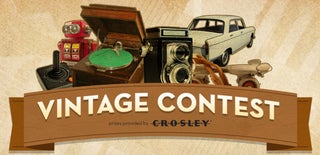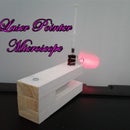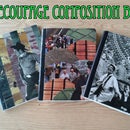Introduction: Let's Turn a Vintage Camera Into a Decorative Web Cam and Light!
I was at my father's house recently and he had a box of stuff that he had cleaned out of his garage. Knowing that I'm a sucker for junk, he offered it to me as my wife shot him dirty looks. There was a couple of old Sony three way speakers with crossovers, an old cast aluminum ice bucket, a collection of shot glasses, a broken CB, a rats nest of wall warts and a Polaroid 250 Land Camera. I loaded the loot in my car while the wife fumed and dad chuckled at conning me into saving him a trip to the dump.
The speakers were stripped from the cheap chipboard cabinets and put in the speaker bin (I have a speaker wall project that I'm saving them for), the ice bucket became the new cat dish, the shot glasses found a home on the art shelf, the CB got stripped for useful parts and the wall warts got bagged and labeled and put in the power supply bin. The camera was cool looking but I had no immediate use for it so it ended up on the junk shelf (I mean one of the junk shelves... OK... in the junk room... no really, it's organized, I swear... mostly).
When I saw the Vintage contest I knew I had to come up with something cool so I went to raid the junk room, err, 'Inspiration Zone'. I came across an old Logitech web cam. I have been wanting to hook it up in a permanent place on my work bench to record time lapses of builds, so I decided to mod it into something cool and retro for the contest. Then I remembered the old Land Camera and everything clicked. I'd put the sensor and lens assembly from the web cam into the Land Camera and wire some LEDs into the flash unit as a video light.
Be sure to read the notes on the pictures for additional details. Let's dig in and see what we have!
*Note*
I have received a few comments about ruining a valuable vintage camera. While I appreciate the concerns, I assure you this was not a valuable camera. The lens was scratched and a battery had been left in it and leaked in the battery compartment. It had been stored for who knows how long in a shed in the woods and it was on its way to the dump. I rescued it from the tip and made a fun project out of it. Relax.
Step 1: Disassembly of the Land Camera
My basic plan was to remove the guts from the shutter assembly on the front of the camera and install the webcam there. First I removed the strap. Then I opened the camera up and removed the screws attaching the bellows to the shutter assembly. I released the bellows latch and gently extended the shutter assembly and retracted the bellows back into the camera body. I removed the Shutter assembly from the support frame and opened it up. After removing the lens I removed the mechanical and electronic parts from the shutter body. I removed the rear lens and then reassembled the empty camera body.
I set the removed parts aside for later sorting. This is very important! I have boxes for all kinds of parts and general classification of parts. This makes finding that weird switch assembly from that old boat I scrapped two years ago much easier at three in the morning when I desperately need it. I justify it this way- as long as I collect things actively by sorting and culling them rather than just piling stuff around then it's OK. A supply is stocked, a collection is curated, but a hoard is just acquired.
Step 2: Disassembly of the Web Cam
Disassembly of the web cam is pretty straight forward- remove some rubber plugs, remove a screw, pop it apart and you're done. Remove the board with the sensor and microphone from the holder and focus ring assembly. This is what we need.
Step 3: Putting Them Together
In order to fit the camera board into the shutter housing I had to modify the body by grinding a 'bulge' into the lens hole. The board was taped and glued in place. A power LED was installed in the hole where the light sensor was in the original camera with power jumpers for the LEDs in the flash unit. The USB cable was fed through the bellows into the camera body.
Step 4: Wiring the LEDs in the Flash Unit
The flash bulb unit was stripped and two blue LEDs were installed with a switch and power and ground leads going to the shutter housing.
Step 5: Finishing the Camera
A mat board disc was cut with holes drilled for the sensor and microphone. This was installed and held in place with the black and chrome lens rings. Now I have a decorative web cam. When I redo my workbench I will mount an old tripod head on an upper corner to cover the work area for time lapses and sped up assembly sequences. It's also convenient for online hangouts and video conferencing. Best of all I've taken an impersonal bit of one-size-fits-all tech and made it unique. It's not just a web cam- it's a story. What has that camera seen since the late sixties when it left the Polaroid factory? What more will it see now that it's been given a new life? While the Land Camera was obsolete, so was the low res Logitech web cam. By combining two redundant pieces of technology that were bound for the trash I've created something that will outlive the useful life of either item. I made this! If it breaks I'll be much more likely to fix it because I'm personally invested in this thing.
This is what the maker movement is all about- taking charge of your consumption and having your way with devices. We don't have to settle for the designs of passionless wage hacks- we can reimagine everything to fit our personal esthetic. Pick up a glue gun, disrupt disposable consumerism and make the future bright.

Runner Up in the
Vintage Contest

Participated in the
Home Technology Contest













